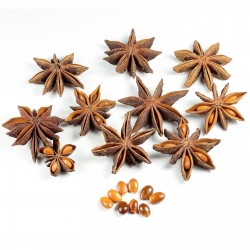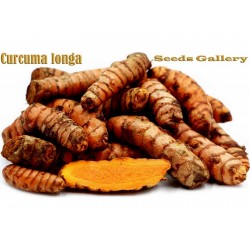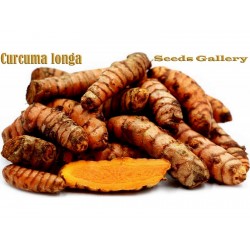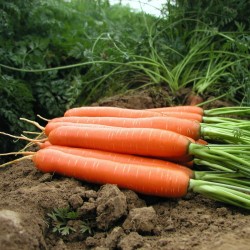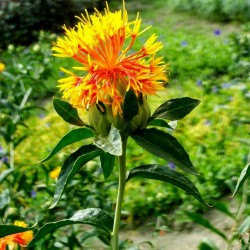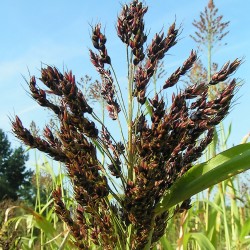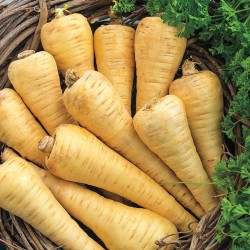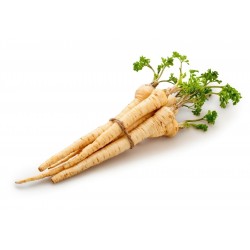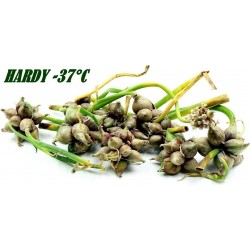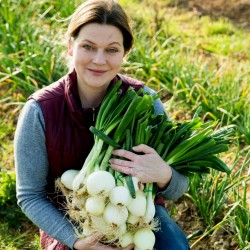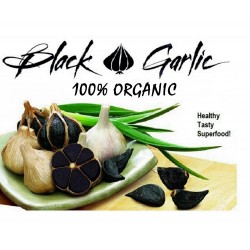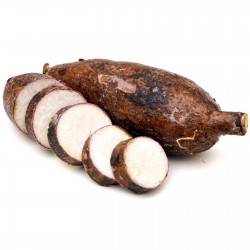
Cassava, Yuca Seeds...
Price
€4.95
SKU: MHS 101
Seeds Gallery Com,
5/
5
<h2 class=""><strong>Cassava, Yuca, Macaxeira, Mandioca, Aipim Seeds (Manihot esculenta)</strong></h2>
<h2><span style="color: #ff0000;" class=""><strong>Price for Package of 3 seeds.</strong></span></h2>
<p><i><b>Manihot esculenta</b></i>,<span> </span>commonly called<span> </span><b>cassava</b><span> </span>(<span class="nowrap"><span class="IPA nopopups noexcerpt">/<span><span title="'k' in 'kind'">k</span><span title="/ə/: 'a' in 'about'">ə</span><span title="/ˈ/: primary stress follows">ˈ</span><span title="'s' in 'sigh'">s</span><span title="/ɑː/: 'a' in 'father'">ɑː</span><span title="'v' in 'vie'">v</span><span title="/ə/: 'a' in 'about'">ə</span></span>/</span></span>),<span> </span><b>manioc</b>,<span> </span><b>yuca</b>,<span> </span><b>macaxeira</b>,<span> </span><b>mandioca,</b><span> </span>and<span> </span><b>aipim</b>, is a woody<span> </span>shrub<span> </span>native to South America of the<span> </span>spurge<span> </span>family,<span> </span>Euphorbiaceae. Although a perennial plant, cassava is extensively cultivated as an annual<span> </span>crop<span> </span>in<span> </span>tropical<span> </span>and<span> </span>subtropical<span> </span>regions for its edible<span> </span>starchy<span> </span>tuberous root, a major source of<span> </span>carbohydrates. Though it is often called<span> </span><i><b>yuca</b></i><span> </span>in Latin American Spanish and in the United States, it is not related to<span> </span>yucca, a shrub in the family<span> </span>Asparagaceae. Cassava is predominantly consumed in boiled form, but substantial quantities are used to extract cassava starch, called<span> </span>tapioca, which is used for food, animal feed, and industrial purposes. The Brazilian Farinha, and the related<span> </span><i>garri</i><span> </span>of West Africa, is an edible coarse flour obtained by grating cassava roots, pressing moisture off the obtained grated pulp, and finally drying it (and roasting in the case of Farinha).</p>
<p>Cassava is the third-largest source of food carbohydrates in the tropics, after<span> </span>rice<span> </span>and<span> </span>maize.<sup id="cite_ref-3" class="reference">[3]</sup><sup id="cite_ref-4" class="reference">[4]</sup><span> </span>Cassava is a major<span> </span>staple food<span> </span>in the developing world, providing a basic diet for over half a billion people.<sup id="cite_ref-5" class="reference">[5]</sup><span> </span>It is one of the most drought-tolerant crops, capable of growing on marginal soils. Nigeria is the world's largest producer of cassava, while Thailand is the largest exporter of cassava starch.</p>
<p>Cassava is classified as either sweet or bitter. Like other roots and tubers, both bitter and sweet varieties of cassava contain<span> </span>antinutritional<span> </span>factors and toxins, with the bitter varieties containing much larger amounts.<sup id="cite_ref-fao.org_6-0" class="reference">[6]</sup><span> </span>It must be properly prepared before consumption, as improper preparation of cassava can leave enough residual<span> </span>cyanide<span> </span>to cause acute<span> </span>cyanide intoxication,<sup id="cite_ref-promedmail-4799579_7-0" class="reference">[7]</sup><sup id="cite_ref-8" class="reference">[8]</sup><span> </span>goiters, and even<span> </span>ataxia, partial paralysis, or death. The more toxic varieties of cassava are a fall-back resource (a "food security<span> </span>crop") in times of famine or food insecurity in some places.<sup id="cite_ref-promedmail-4799579_7-1" class="reference">[7]</sup><sup id="cite_ref-fao.org_6-1" class="reference">[6]</sup><span> </span>Farmers often prefer the bitter varieties because they deter pests, animals, and thieves.<sup id="cite_ref-leisa_9-0" class="reference"></sup></p>
<h2><span class="mw-headline" id="Description">Description</span></h2>
<p>The cassava root is long and tapered, with a firm, homogeneous flesh encased in a detachable rind, about 1 mm thick, rough and brown on the outside. Commercial<span> </span>cultivars<span> </span>can be 5 to 10 cm (2.0 to 3.9 in) in diameter at the top, and around 15 to 30 cm (5.9 to 11.8 in) long. A woody vascular bundle runs along the root's<span> </span>axis. The flesh can be chalk-white or yellowish. Cassava roots are very rich in<span> </span>starch<span> </span>and contain small amounts of calcium (16 mg/100 g), phosphorus (27 mg/100 g), and vitamin C (20.6 mg/100 g).<sup id="cite_ref-10" class="reference">[10]</sup><span> </span>However, they are poor in<span> </span>protein<span> </span>and other<span> </span>nutrients. In contrast, cassava leaves are a good source of protein (rich in lysine), but deficient in the<span> </span>amino acid<span> </span>methionine<span> </span>and possibly<span> </span>tryptophan.<sup id="cite_ref-11" class="reference">[11]</sup></p>
<div class="thumb tmulti tleft">
<div class="thumbinner">
<div class="trow">
<div class="theader">Details of cassava plants</div>
</div>
<div class="trow">
<div class="tsingle">
<div class="thumbimage"><img alt="" src="https://upload.wikimedia.org/wikipedia/commons/thumb/8/8f/Manihot_esculenta_dsc07325.jpg/135px-Manihot_esculenta_dsc07325.jpg" width="135" height="101"></div>
<div class="thumbcaption text-align-center">Unprocessed roots</div>
</div>
<div class="tsingle">
<div class="thumbimage"><img alt="" src="https://upload.wikimedia.org/wikipedia/commons/thumb/1/10/Cassava1_%283945716612%29.jpg/152px-Cassava1_%283945716612%29.jpg" width="152" height="101"></div>
<div class="thumbcaption text-align-center">Leaf</div>
</div>
<div class="tsingle">
<div class="thumbimage"><img alt="" src="https://upload.wikimedia.org/wikipedia/commons/thumb/4/4c/Cassava2_%283945624614%29.jpg/152px-Cassava2_%283945624614%29.jpg" width="152" height="101"></div>
<div class="thumbcaption text-align-center">Leaf detail</div>
</div>
<div class="tsingle">
<div class="thumbimage"><img alt="" src="https://upload.wikimedia.org/wikipedia/commons/thumb/e/e7/Cassava_buds_%284733912948%29.jpg/67px-Cassava_buds_%284733912948%29.jpg" width="67" height="101"></div>
<div class="thumbcaption text-align-center">Picked buds</div>
</div>
<div class="tsingle">
<div class="thumbimage"><img alt="" src="https://upload.wikimedia.org/wikipedia/commons/thumb/d/d3/Manihot_esculenta_MHNT.BOT.2004.0.508.jpg/146px-Manihot_esculenta_MHNT.BOT.2004.0.508.jpg" width="146" height="101"></div>
<div class="thumbcaption text-align-center">Seeds</div>
</div>
</div>
</div>
</div>
<div></div>
<h2><span class="mw-headline" id="History">History</span></h2>
<div class="thumb tleft">
<div class="thumbinner"><img alt="" src="https://upload.wikimedia.org/wikipedia/commons/thumb/7/7e/Albert_Eckhout_-_Mandioca.jpg/220px-Albert_Eckhout_-_Mandioca.jpg" width="220" height="221" class="thumbimage">
<div class="thumbcaption">
<div class="magnify"></div>
17th c. painting by<span> </span>Albert Eckhout<span> </span>in<span> </span>Dutch Brazil</div>
</div>
</div>
<p>Wild populations of<span> </span><i>M. esculenta</i><span> </span>subspecies<span> </span><i>flabellifolia</i>, shown to be the progenitor of domesticated cassava, are centered in west-central Brazil, where it was likely first domesticated no more than 10,000 years<span> </span>BP.<sup id="cite_ref-12" class="reference">[12]</sup><span> </span>Forms of the modern domesticated species can also be found growing in the wild in the south of Brazil. By 4,600 BC, manioc (cassava) pollen appears in the<span> </span>Gulf of Mexico<span> </span>lowlands, at the<span> </span>San Andrés<span> </span>archaeological site.<sup id="cite_ref-13" class="reference">[13]</sup><span> </span>The oldest direct evidence of cassava cultivation comes from a 1,400-year-old<span> </span>Maya<span> </span>site,<span> </span>Joya de Cerén, in<span> </span>El Salvador.<sup id="cite_ref-14" class="reference">[14]</sup><span> </span>With its high food potential, it had become a<span> </span>staple food<span> </span>of the native populations of northern South America, southern Mesoamerica, and the Caribbean by the time of European contact in 1492. Cassava was a staple food of<span> </span>pre-Columbian<span> </span>peoples in the Americas and is often portrayed in<span> </span>indigenous art. The<span> </span>Moche<span> </span>people often depicted yuca in their ceramics.<sup id="cite_ref-15" class="reference">[15]</sup></p>
<p>Spaniards in their early occupation of Caribbean islands did not want to eat cassava or maize, which they considered insubstantial, dangerous, and not nutritious. They much preferred foods from Spain, specifically wheat bread, olive oil, red wine, and meat, and considered maize and cassava damaging to Europeans.<sup id="cite_ref-16" class="reference">[16]</sup><span> </span>The cultivation and consumption of cassava was nonetheless continued in both Portuguese and Spanish America. Mass production of cassava bread became the first Cuban industry established by the Spanish,<sup id="cite_ref-17" class="reference">[17]</sup>Ships departing to Europe from Cuban ports such as<span> </span>Havana,<span> </span>Santiago,<span> </span>Bayamo, and<span> </span>Baracoa<span> </span>carried goods to Spain, but sailors needed to be provisioned for the voyage. The Spanish also needed to replenish their boats with dried meat, water, fruit, and large amounts of cassava bread.<sup id="cite_ref-18" class="reference">[18]</sup><span> </span>Sailors complained that it caused them digestive problems.<sup id="cite_ref-19" class="reference">[19]</sup><span> </span>Tropical Cuban weather was not suitable for wheat planting and cassava would not go stale as quickly as regular bread.</p>
<p>Cassava was introduced to Africa by Portuguese traders from Brazil in the 16th century. Around the same period, it was also introduced to Asia through<span> </span>Columbian Exchange<span> </span>by Portuguese and Spanish traders, planted in their colonies in Goa, Malacca, Eastern Indonesia, Timor and the Philippines.<span> </span>Maize<span> </span>and cassava are now important staple foods, replacing native African crops in places such as Tanzania.<sup id="cite_ref-20" class="reference">[20]</sup><span> </span>Cassava has also become an important staple in Asia, extensively cultivated in Indonesia, Thailand and Vietnam.<sup id="cite_ref-21" class="reference">[21]</sup><span> </span>Cassava is sometimes described as the "bread of the tropics"<sup id="cite_ref-22" class="reference">[22]</sup><span> </span>but should not be confused with the tropical and equatorial<span> </span>bread tree<span> </span><i>(Encephalartos)</i>, the<span> </span>breadfruit<span> </span><i>(Artocarpus altilis)</i><span> </span>or the<span> </span>African breadfruit<span> </span><i>(Treculia africana)</i>.</p>
<h2><span class="mw-headline" id="Production">Production</span></h2>
<p>In 2016, global production of cassava root was 277 million<span> </span>tonnes, with<span> </span>Nigeria<span> </span>as the world's largest producer having 21% of the world total (table). Other major growers were<span> </span>Thailand,<span> </span>Brazil, and<span> </span>Indonesia.<sup id="cite_ref-faostat16_23-0" class="reference">[23]</sup></p>
<table class="wikitable">
<tbody>
<tr>
<th colspan="2">Cassava production – 2016</th>
</tr>
<tr>
<th>Country</th>
<th><small>Production (millions of<span> </span>tonnes)</small></th>
</tr>
<tr>
<td><center><span class="flagicon"><img alt="" src="https://upload.wikimedia.org/wikipedia/commons/thumb/7/79/Flag_of_Nigeria.svg/23px-Flag_of_Nigeria.svg.png" width="23" height="12" class="thumbborder"> </span>Nigeria</center></td>
<td><center>57.1</center></td>
</tr>
<tr>
<td><center><span class="flagicon"><img alt="" src="https://upload.wikimedia.org/wikipedia/commons/thumb/a/a9/Flag_of_Thailand.svg/23px-Flag_of_Thailand.svg.png" width="23" height="15" class="thumbborder"> </span>Thailand</center></td>
<td><center>31.1</center></td>
</tr>
<tr>
<td><center><span class="flagicon"><img alt="" src="https://upload.wikimedia.org/wikipedia/en/thumb/0/05/Flag_of_Brazil.svg/22px-Flag_of_Brazil.svg.png" width="22" height="15" class="thumbborder"> </span>Brazil</center></td>
<td><center>21.1</center></td>
</tr>
<tr>
<td><center><span class="flagicon"><img alt="" src="https://upload.wikimedia.org/wikipedia/commons/thumb/9/9f/Flag_of_Indonesia.svg/23px-Flag_of_Indonesia.svg.png" width="23" height="15" class="thumbborder"> </span>Indonesia</center></td>
<td><center>20.7</center></td>
</tr>
<tr>
<td><center><span class="flagicon"><img alt="" src="https://upload.wikimedia.org/wikipedia/commons/thumb/6/6f/Flag_of_the_Democratic_Republic_of_the_Congo.svg/20px-Flag_of_the_Democratic_Republic_of_the_Congo.svg.png" width="20" height="15" class="thumbborder"> </span>Democratic Republic of the Congo</center></td>
<td><center>14.7</center></td>
</tr>
<tr>
<td><center><b>World</b></center></td>
<td><center><b>277.1</b></center></td>
</tr>
<tr>
<td colspan="2"><center><small>Source:<span> </span>FAOSTAT<span> </span>of the<span> </span>United Nations<sup id="cite_ref-faostat16_23-1" class="reference">[23]</sup></small></center></td>
</tr>
</tbody>
</table>
<p>Cassava is one of the most drought-tolerant crops, can be successfully grown on marginal soils, and gives reasonable yields where many other crops do not grow well. Cassava is well adapted within latitudes 30° north and south of the equator, at elevations between sea level and 2,000 m (6,600 ft) above sea level, in equatorial temperatures, with rainfalls from 50 mm (2.0 in) to 5 m (16 ft) annually, and to poor soils with a pH ranging from acidic to alkaline. These conditions are common in certain parts of Africa and South America.</p>
<p>Cassava is a highly-productive crop when considering food calories produced per unit land area, per unit of time. Significantly higher than other staple crops, cassava can produce food calories at rates exceeding 250,000 kcal/hectare/day, as compared with 176,000 for rice, 110,000 for wheat and 200,000 for maize (corn).</p>
<h2><span class="mw-headline" id="Economic_importance">Economic importance</span></h2>
<div class="hatnote navigation-not-searchable">See also:<span> </span>Tapioca § Production</div>
<div class="thumb tright">
<div class="thumbinner"><img alt="" src="https://upload.wikimedia.org/wikipedia/commons/thumb/3/3e/Manihot_esculenta_-_cross_section_2.jpg/220px-Manihot_esculenta_-_cross_section_2.jpg" width="220" height="146" class="thumbimage">
<div class="thumbcaption">
<div class="magnify"></div>
A cassava tuber in cross-section</div>
</div>
</div>
<p>Cassava,<span> </span>yams<span> </span>(<i>Dioscorea</i><span> </span>spp.), and<span> </span>sweet potatoes<span> </span>(<i>Ipomoea batatas</i>) are important sources of food in the tropics. The cassava plant gives the third-highest yield of<span> </span>carbohydrates<span> </span>per cultivated area among crop plants, after<span> </span>sugarcane<span> </span>and<span> </span>sugar beets.<sup id="cite_ref-24" class="reference">[24]</sup><span> </span>Cassava plays a particularly important role in agriculture in developing countries, especially in<span> </span>sub-Saharan Africa, because it does well on poor soils and with low rainfall, and because it is a perennial that can be harvested as required. Its wide harvesting window allows it to act as a famine reserve and is invaluable in managing labor schedules. It offers flexibility to resource-poor farmers because it serves as either a subsistence or a cash crop.<sup id="cite_ref-25" class="reference">[25]</sup></p>
<p>Worldwide, 800 million people depend on cassava as their primary food staple.<sup id="cite_ref-26" class="reference">[26]</sup><span> </span>No continent depends as much on root and tuber crops in feeding its population as does Africa. In the humid and sub-humid areas of tropical Africa, it is either a primary staple food or a secondary costaple. In<span> </span>Ghana, for example, cassava and yams occupy an important position in the agricultural economy and contribute about 46 percent of the agricultural gross domestic product. Cassava accounts for a daily caloric intake of 30 percent in<span> </span>Ghanaand is grown by nearly every farming family. The importance of cassava to many Africans is epitomised in the<span> </span>Ewe<span> </span>(a language spoken in Ghana,<span> </span>Togo<span> </span>and<span> </span>Benin) name for the plant,<span> </span><i>agbeli</i>, meaning "there is life".</p>
<p>In<span> </span>Tamil Nadu, India, there are many cassava processing factories alongside<span> </span>National Highway 68<span> </span>between<span> </span>Thalaivasal<span> </span>and<span> </span>Attur. Cassava is widely cultivated and eaten as a staple food in<span> </span>Andhra Pradesh<span> </span>and in<span> </span>Kerala. In<span> </span>Assam<span> </span>it is an important source of carbohydrates especially for natives of hilly areas.</p>
<p>In the subtropical region of southern China, cassava is the fifth-largest crop in term of production, after<span> </span>rice,<span> </span>sweet potato,<span> </span>sugar cane, and<span> </span>maize. China is also the largest export market for cassava produced in Vietnam and Thailand. Over 60 percent of cassava production in China is concentrated in a single province,<span> </span>Guangxi, averaging over seven million tonnes annually.</p>
<h2><span class="mw-headline" id="Uses">Uses</span></h2>
<div class="hatnote navigation-not-searchable">See also:<span> </span>Tapioca § Uses</div>
<table class="box-More_citations_needed_section plainlinks metadata ambox ambox-content ambox-Refimprove">
<tbody>
<tr>
<td class="mbox-image">
<div><img alt="" src="https://upload.wikimedia.org/wikipedia/en/thumb/9/99/Question_book-new.svg/50px-Question_book-new.svg.png" width="50" height="39"></div>
</td>
<td class="mbox-text">
<div class="mbox-text-span">This section<span> </span><b>needs additional citations for<span> </span>verification</b>.<span class="hide-when-compact"><span> </span>Please help<span> </span>improve this article<span> </span>by<span> </span>adding citations to reliable sources. Unsourced material may be challenged and removed.<br><small><span class="plainlinks"><i>Find sources:</i> "Cassava" – news <b>·</b><span> </span>newspapers <b>·</b><span> </span>books <b>·</b><span> </span>scholar <b>·</b><span> </span>JSTOR</span></small></span><span> </span><small class="date-container"><i>(<span class="date">August 2017</span>)</i></small><small class="hide-when-compact"><i><span> </span>(Learn how and when to remove this template message)</i></small></div>
</td>
</tr>
</tbody>
</table>
<div class="thumb tright">
<div class="thumbinner"><img alt="" src="https://upload.wikimedia.org/wikipedia/commons/thumb/4/47/Cambodia16_lo_%284039995158%29.jpg/220px-Cambodia16_lo_%284039995158%29.jpg" width="220" height="146" class="thumbimage">
<div class="thumbcaption">
<div class="magnify"></div>
Processing cassava starch into cassava noodles,<span> </span>Kampong Cham</div>
</div>
</div>
<h3><span class="mw-headline" id="Alcoholic_beverages">Alcoholic beverages</span></h3>
<div class="hatnote navigation-not-searchable">Main article:<span> </span>Alcoholic beverage § Beverages by type</div>
<p>Alcoholic beverages<span> </span>made from cassava include<span> </span>cauim<span> </span>and<span> </span>tiquira<span> </span>(Brazil),<span> </span>kasiri<span> </span>(Guyana, Suriname), impala (Mozambique), masato (Peruvian<span> </span>Amazonia chicha),<span> </span>parakari<span> </span>or kari (Guyana),<span> </span>nihamanchi<span> </span>(South America) also known as nijimanche (Ecuador and Peru), ö döi (chicha de yuca, Ngäbe-Bugle, Panama), sakurá (Brazil, Suriname), and tarul ko jaarh (Darjeeling, Sikkim, India).</p>
<h3><span class="mw-headline" id="Culinary">Culinary</span></h3>
<div class="hatnote navigation-not-searchable">Main article:<span> </span>Cassava-based dishes</div>
<div class="thumb tright">
<div class="thumbinner"><img alt="" src="https://upload.wikimedia.org/wikipedia/commons/thumb/e/e7/Cassava_heavy_cake.jpg/220px-Cassava_heavy_cake.jpg" width="220" height="165" class="thumbimage">
<div class="thumbcaption">
<div class="magnify"></div>
Cassava heavy cake</div>
</div>
</div>
<p>Cassava-based dishes<span> </span>are widely consumed wherever the plant is cultivated; some have regional, national, or ethnic importance.<sup id="cite_ref-27" class="reference">[27]</sup><span> </span>Cassava must be cooked properly to detoxify it before it is eaten.</p>
<p>Cassava can be cooked in many ways. The root of the sweet variety has a delicate flavor and can replace potatoes. It is used in<span> </span>cholent<span> </span>in some households.<sup class="noprint Inline-Template Template-Fact">[<i><span title="This claim needs references to reliable sources. (December 2018)">citation needed</span></i>]</sup><span> </span>It can be made into a flour that is used in breads, cakes and cookies. In Brazil, detoxified manioc is ground and cooked to a dry, often hard or crunchy meal known as<span> </span><i>farofa</i><span> </span>used as a condiment, toasted in butter, or eaten alone as a side dish.</p>
<h3><span class="mw-headline" id="Nutritional_profile">Nutritional profile</span></h3>
<table class="infobox nowrap"><caption>Cassava, raw</caption>
<tbody>
<tr>
<th colspan="2">Nutritional value per 100 g (3.5 oz)</th>
</tr>
<tr>
<th scope="row">Energy</th>
<td>160 kcal (670 kJ)</td>
</tr>
<tr>
<td colspan="2"></td>
</tr>
<tr>
<th scope="row">
<div><b>Carbohydrates</b></div>
</th>
<td>
<div>38.1 g</div>
</td>
</tr>
<tr>
<th scope="row">Sugars</th>
<td>1.7 g</td>
</tr>
<tr>
<th scope="row">Dietary fiber</th>
<td>1.8 g</td>
</tr>
<tr>
<td colspan="2"></td>
</tr>
<tr>
<th scope="row">
<div><b>Fat</b></div>
</th>
<td>
<div>0.3 g</div>
</td>
</tr>
<tr>
<td colspan="2"></td>
</tr>
<tr>
<th scope="row">
<div><b>Protein</b></div>
</th>
<td>
<div>1.4 g</div>
</td>
</tr>
<tr>
<td colspan="2"></td>
</tr>
<tr>
<th scope="row"><b>Vitamins</b></th>
<td><b>Quantity</b><span><abbr title="Percentage of Daily Value"><b>%DV</b></abbr><sup>†</sup></span></td>
</tr>
<tr>
<th scope="row">Thiamine<span> </span><span>(B1)</span></th>
<td>
<div>8%</div>
0.087 mg</td>
</tr>
<tr>
<th scope="row">Riboflavin<span> </span><span>(B2)</span></th>
<td>
<div>4%</div>
0.048 mg</td>
</tr>
<tr>
<th scope="row">Niacin<span> </span><span>(B3)</span></th>
<td>
<div>6%</div>
0.854 mg</td>
</tr>
<tr>
<th scope="row">Vitamin B<span>6</span></th>
<td>
<div>7%</div>
0.088 mg</td>
</tr>
<tr>
<th scope="row">Folate<span> </span><span>(B9)</span></th>
<td>
<div>7%</div>
27 μg</td>
</tr>
<tr>
<th scope="row">Vitamin C</th>
<td>
<div>25%</div>
20.6 mg</td>
</tr>
<tr>
<td colspan="2"></td>
</tr>
<tr>
<th scope="row"><b>Minerals</b></th>
<td><b>Quantity</b><span><abbr title="Percentage of Daily Value"><b>%DV</b></abbr><sup>†</sup></span></td>
</tr>
<tr>
<th scope="row">Calcium</th>
<td>
<div>2%</div>
16 mg</td>
</tr>
<tr>
<th scope="row">Iron</th>
<td>
<div>2%</div>
0.27 mg</td>
</tr>
<tr>
<th scope="row">Magnesium</th>
<td>
<div>6%</div>
21 mg</td>
</tr>
<tr>
<th scope="row">Phosphorus</th>
<td>
<div>4%</div>
27 mg</td>
</tr>
<tr>
<th scope="row">Potassium</th>
<td>
<div>6%</div>
271 mg</td>
</tr>
<tr>
<th scope="row">Sodium</th>
<td>
<div>1%</div>
14 mg</td>
</tr>
<tr>
<th scope="row">Zinc</th>
<td>
<div>4%</div>
0.34 mg</td>
</tr>
<tr>
<td colspan="2"></td>
</tr>
<tr>
<th scope="row"><b>Other constituents</b></th>
<td><b>Quantity</b></td>
</tr>
<tr>
<th scope="row">Water</th>
<td>60 g</td>
</tr>
<tr>
<td colspan="2"><hr>
<div class="wrap">Full Link to USDA Database entry</div>
</td>
</tr>
<tr>
<td colspan="2">
<div class="plainlist">
<ul>
<li>Units</li>
<li>μg =<span> </span>micrograms • mg =<span> </span>milligrams</li>
<li>IU =<span> </span>International units</li>
</ul>
</div>
</td>
</tr>
<tr>
<td colspan="2" class="wrap"><sup>†</sup>Percentages are roughly approximated using<span> </span>US recommendations<span> </span>for adults.</td>
</tr>
</tbody>
</table>
<p>Raw cassava is 60% water, 38%<span> </span>carbohydrates, 1%<span> </span>protein, and has negligible<span> </span>fat<span> </span>(table).<sup id="cite_ref-fao_28-0" class="reference">[28]</sup><span> </span>In a 100 gram amount, raw cassava provides 160<span> </span>calories<span> </span>and contains 25% of the<span> </span>Daily Value<span> </span>(DV) for<span> </span>vitamin C, but otherwise has no<span> </span>micronutrients<span> </span>in significant content (no values above 10% DV; table). Cooked cassava starch has a<span> </span>digestibility<span> </span>of over 75%.<sup id="cite_ref-fao_28-1" class="reference">[28]</sup></p>
<p>Cassava, like other foods, also has<span> </span>antinutritional<span> </span>and toxic factors. Of particular concern are the<span> </span>cyanogenic glucosides<span> </span>of cassava (linamarin<span> </span>and<span> </span>lotaustralin). On hydrolysis, these release<span> </span>hydrocyanic acid (HCN).<sup class="noprint Inline-Template Template-Fact">[<i><span title="This claim needs references to reliable sources. (May 2017)">citation needed</span></i>]</sup><span> </span>The presence of cyanide in cassava is of concern for human and for animal consumption. The concentration of these antinutritional and unsafe glycosides varies considerably between varieties and also with climatic and cultural conditions. Selection of cassava species to be grown, therefore, is quite important. Once harvested, bitter cassava must be treated and prepared properly prior to human or animal consumption, while sweet cassava can be used after simply boiling.</p>
<h3><span class="mw-headline" id="Comparison_with_other_major_staple_foods">Comparison with other major staple foods</span></h3>
<p>A<span> </span>comparative table<span> </span>shows that<span> </span>cassava is a good energy source. In its prepared forms in which its toxic or unpleasant components have been reduced to acceptable levels, it contains an extremely high proportion of starch. Compared to most staples however, cassava accordingly is a poorer dietary source of protein and most other essential nutrients. Though an important staple, its main value is as a component of a balanced diet.</p>
<p>Comparisons between the nutrient content of cassava and other major<span> </span>staple foods<span> </span>when raw,<span> </span>as shown in the table, must be interpreted with caution because most staples are not edible in such forms and many are indigestible, even dangerously poisonous or otherwise harmful.<sup class="noprint Inline-Template Template-Fact">[<i><span title="This claim needs references to reliable sources. (May 2017)">citation needed</span></i>]</sup><span> </span>For consumption, each must be prepared and cooked as appropriate. Suitably cooked or otherwise prepared, the nutritional and antinutritional contents of each of these staples is widely different from that of raw form and depends on the methods of preparation such as soaking, fermentation, sprouting, boiling, or baking.<strong><a href="https://en.wikipedia.org/wiki/Cassava" target="_blank" title="Source WIKIPEDIA Cassava" rel="noreferrer noopener"></a></strong></p>
<script src="//cdn.public.n1ed.com/G3OMDFLT/widgets.js"></script>
MHS 101 (3 S)





